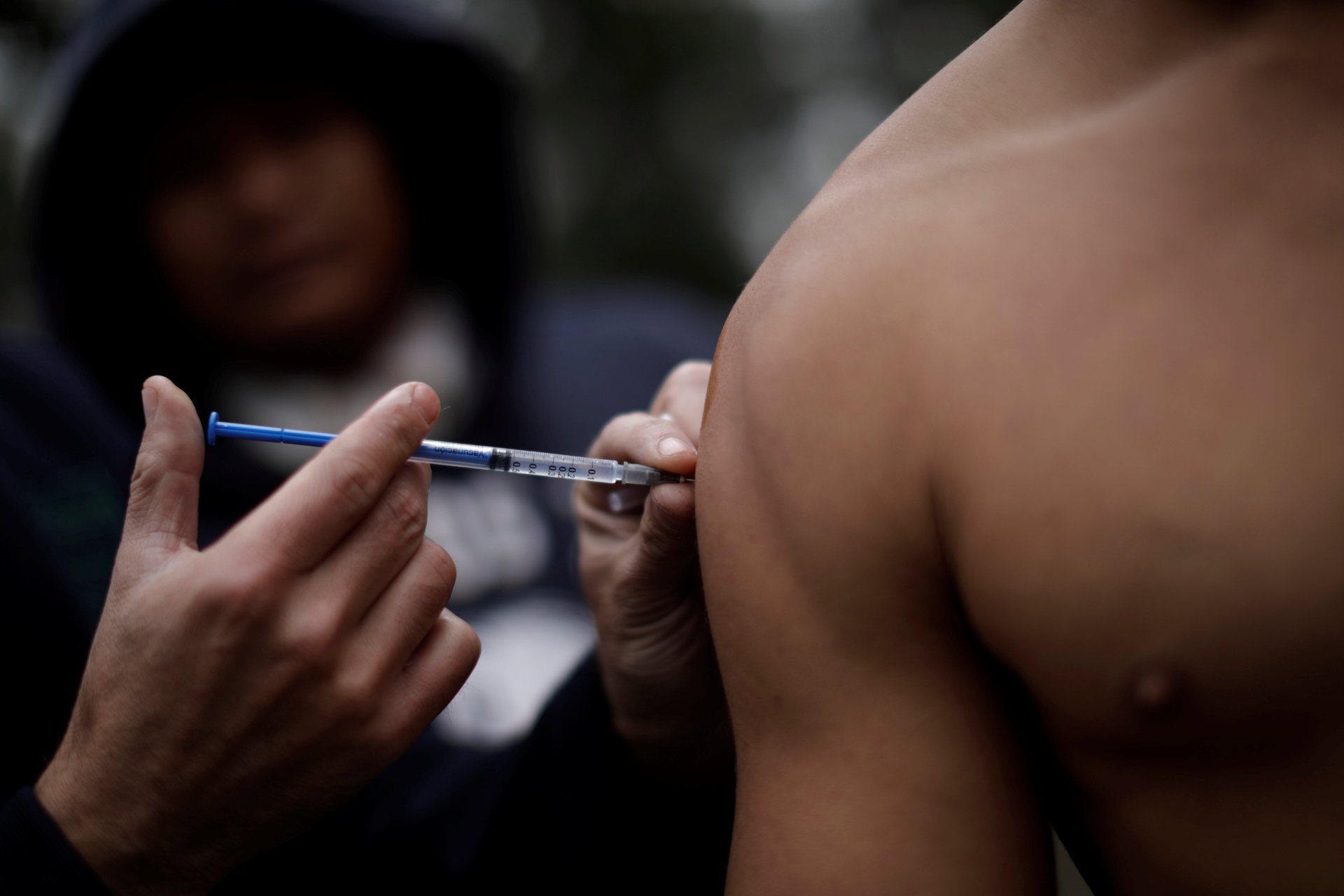How H1N1 prepared the US to fight coronavirus
During the second debate of the presidential campaign in the US on Oct. 7, vice president Mike Pence criticized presidential hopeful Joe Biden’s pandemic response. But Pence wasn’t referring to the coronavirus pandemic still affecting lives around the world—he was referring to 2009’s H1N1 pandemic, often referred to as the swine flu.


During the second debate of the presidential campaign in the US on Oct. 7, vice president Mike Pence criticized presidential hopeful Joe Biden’s pandemic response. But Pence wasn’t referring to the coronavirus pandemic still affecting lives around the world—he was referring to 2009’s H1N1 pandemic, often referred to as the swine flu.
“If the swine flu had been as lethal as the coronavirus in 2009 when Joe Biden was vice president,” Pence said during the debate, “we would have lost 2 million American lives.”
That pandemic, which abated in just over a year, differed in extreme ways from the coronavirus, making it difficult to compare the government’s responses. But the way the US fought H1N1 under president Barack Obama included both successes and failures—both of which helped prepare the country for a future pandemic.
The first detected case of H1N1 appeared in the United States in April 2009, when a child in San Diego, California tested positive for a new strain of the influenza virus. H1N1 spread more widely in a year than the coronavirus has in its first eight months, infecting an estimated 60 million Americans. But it killed at a far, far less devastating rate: Approximately 12,500 H1N1 patients died. Of the 7.5 million reported Covid-19 cases in the US, more than 210,000 people have died. The majority of those deaths have been over the age of 65—in stark contrast with the US H1N1 epidemic, in which 87% of deaths occurred in those under 65.
Many aspects of the pandemic response went well. Within just a few weeks of the first H1N1 diagnosis, the Centers for Disease Control and Prevention (CDC) had sent out test kits to affiliated labs (RT-PCR tests, a new technology at the time, have now become standard), and shared the viral genome with researchers internationally. Hospitals had no shortage of antiviral medications as they were released from the national stockpile, for which which the US Food and Drug Administration (FDA) had issued emergency use authorization.
International coordination was frequent and promising. The government worked to be transparent with Americans, and with other countries and global organizations once the disease went global. Because H1N1 is a flu virus, researchers had a scaffold on which to build a new vaccine. Once it was manufactured, the CDC effectively distributed its supply of the vaccine.
Overall, the pandemic—which spread beyond the US—emphasized the need for investment in public health around the globe. That need only became clearer when the Ebola epidemic emerged in west Africa 2014.
But H1N1 also highlighted some shortfalls in the US’s existing pandemic response system. Joe Biden, who was vice president at the time, was criticized for being overly alarmist for suggesting that Americans not travel shortly after the CDC had identified the novel virus.
The biggest lesson, though, comes from the creation and distribution of the H1N1 vaccine. Though the CDC started working on a vaccine within weeks of identifying the new flu strain and was able to release it just six months, only a few million were initially available. That led to mass shortages and an erosion of public trust in the federal government’s response to the pandemic.
That’s one possible driver for the Trump administration’s focus on vaccine production, the primary goal of its Operation Warp Speed. A vaccine is a clear, binary goal—ideally, for Trump, deliverable to Americans before the election on Nov. 3. “We have five companies in phase 3 clinical trials, and we’re right now producing tens of millions of doses,” Pence said in the debate, though none of those vaccines have completed their final trials of efficacy and safety.
Whether it’s due to the circumstances of the pandemic or true under-preparedness, the Trump administration’s coronavirus response to date has left much to be desired, from shortages of chemicals needed for testing to a lack of cohesive federal response. And until the world has access to a vaccine—one that’s shown to be effective and has been rolled out to all that want it—it won’t be possibly to fully compare the responses to these wildly different pandemics.